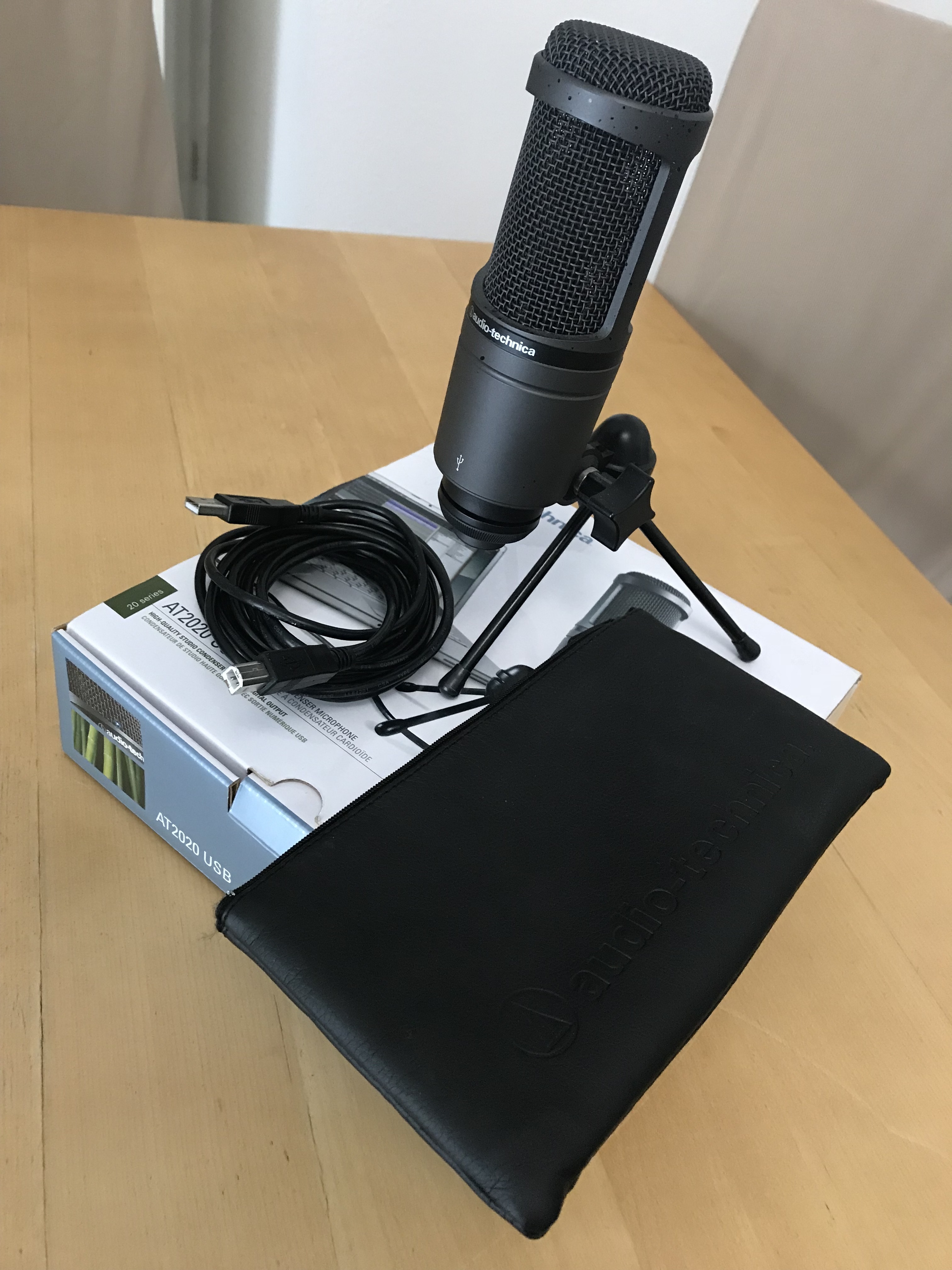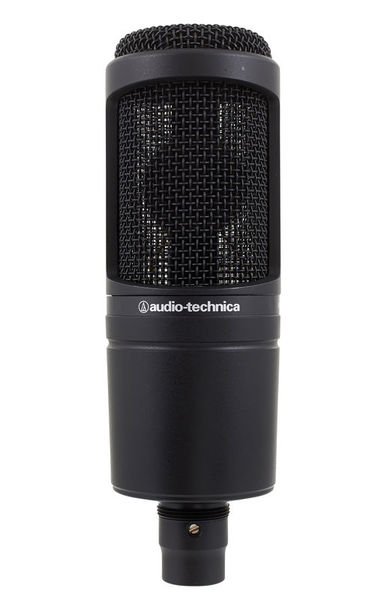

The USB side of things caters for 16-bit A-D conversion (which can accommodate a dynamic range of over 90dB) and a sample rate of 44.1kHz. Pads shouldn’t be necessary, though, given that the mic can handle pretty high SPLs. There are no pads or filters, so any necessary low-cut EQ must be applied after recording.

This isn’t exceptional but it’s adequately low for typical close-miked studio applications, which is precisely what this mic is intended for. The signal-to-noise ratio is quoted as 74dB (1kHz at 1Pa), which equates to a self noise or EIN figure of 20dB. The mic retains the form factor of the wired AT2020, but is distinguishable by its attractive shade of metallic dark grey.

A blue LED inside the basket confirms that the mic is powered up. This latest USB version offers essentially the same performance, but this time power is drawn from the USB port, rather than from phantom power, and a standard full-size USB connector takes the place of the usual XLR. Its back-electret capsule features a low-mass diaphragm with a frequency range in excess of 20Hz to 16kHz and a maximum SPL handling of 144dB (1kHz at 1% THD). The latest addition to the 2020 stable, the AT2020 USB+ addresses precisely this deficiency, and bundled accessories include a conventional stand-mounting swivel clamp, a small tripod desk stand and a 10 foot USB cable.įor those as yet unfamiliar with the original AT2020, it is a side-address, medium-diaphragm (16mm diameter) mic with a fixed cardioid pattern. As with many of the early USB mics, though, the original AT2020 USB lacked some useful features, such as a headphones output to monitor what you recorded. The original AT2020 USB was designed to appeal to those computer users who don’t have a separate audio interface with a built-in mic preamp - musicians working alone, needing only to record one part at a time, or anyone recording voice-overs for podcasts and suchlike. Audio-Technica’s AT2020 is often recommended as mic whose subjective results seem much better than you’d expect for the very modest price tag, and launching a USB version must have been a no-brainer for the company.


 0 kommentar(er)
0 kommentar(er)
